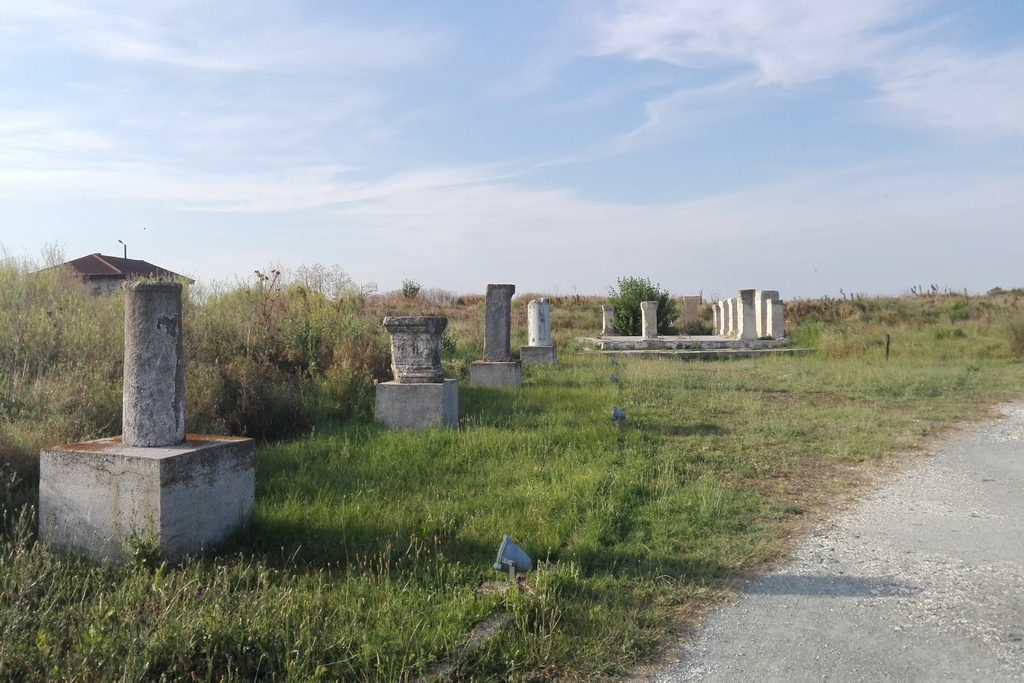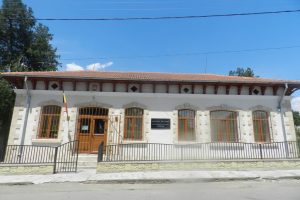

Histria Fortress was founded in the middle of the seventh century BCE (Year 657 BCE as stated by the historian Eusebius) by colonists from Miletus on the bank of Sinoe Lake, “at a distance of 500 stages from Istru sacred mouth” (as stated by Strabo). The city had an uninterrupted development for 1.300 years starting from the Greek period until the Roman-Byzantine era.
After a violent destruction, by the end of Vith century BCE in full classical period, a new enclosure wall reduced to half the initial surface of the city. During this period, Histria knows a democratic regime, the accession to the Athenian Maritime League, intensive trade and even its own currency.
The attempt of the first Scythian wave to settle in the southern part of the Danube and the rebellions of the Black Sea fortresses against Lysimachus caused a new destruction to the fortress, by the end of Ivth century BCE During the subsequent centuries the city recovered and lived a new flourishing, especially for the first alliances with some heads of Getae (Zalmodegikos, Rhemaxos). Ist Century BCE brought new worries and external dangers: King of Pontus, Mithridates VI Eupator, sent troops in Histria, and during the year 72 BCE the first Roman armies take out the west Pontus colonies from the influence of Mithridates, and a few years later, the Getae-Dacian King Burebista included the fortress under his rule. Once with the death of Burebista the fortress entered under Roman rule, thus ending the period of autonomy. Under Roman rule the fortress knew a new flourishing.
Archaelogical excavations started even since 1914, have revealed apart from the enclosure walls mentioned above, a number of remarkable monuments dating from different periods of the fortress existence. Also, excavations have provided a rich archaeological material, mostly of it being exposed in the museum of the fortress: sculptures, reliefs, building materials, inscriptions, ceramics (Greek and Roman), glassware, metal objects.
Thus, Histria, the oldest urban settlement in the country, has been discovered since 1914, by the excavations of the great historian and archaeologist Vasile Pârvan.
The name of Histria fortress (Istria in Greek language), is given by the name of Istros river, as Danube it was called by the Greeks.
The settlement was surrounded by a strong wall of defense (only the western wall of the fortress wall had 10 towers and two gates), was supplied with water through pipes long of more than 20 kilometers, which supplied also the baths built during Roman times, the streets were paved with stone, and had both institutions of physical education (gymnasion) and cultural-artistic (Museion).
The necropolis, located outside the ancient city includes numerous funeral mounds and a small number of flat graves. The most often used funerary rite during the construction of mounds was cremation. Mounds within Histria necropolis include in their infrastructure a peripheral ditch, a funerary platform and a rock belt such as green shales outcropped on the eastern border of the fortress. Some mounds are four to five meters tall, others are smaller. In the center of the mound are located mounds where near the deceased, are put pots, especially amphorae.




